Learn how to mix from mono sources
Utilise the stereo field and start a new production pan-demic
Plug-ins work hard to impress us these days with chains of wide, stereo effects in line, keeping them active in our speakers long after our fingers have left our keyboards.
There's no doubting that many of these sounds, in isolation, sound incredible, but more than a couple of these in your mix and you'll soon run into trouble. As so much detail in them is pushed hard left and right, if you stack multiple sound sources which adopt this approach, you'll actually dilute the 'power' of your mix's width with too many elements hiding out at the sides. Removing effects and bouncing sounds like these down in mono gives you a much better starting point. For the following steps, where necessary, we've created mono versions of sounds that were originally playing back in stereo. For a greater understanding on how this is done, read the 'Mono Happy' box on the next page. In the meantime, here's how a creative mix can unfold from such a narrow starting point.
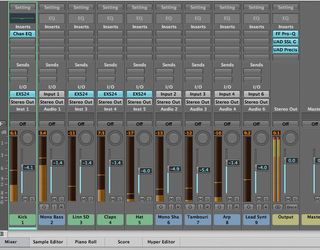
1. With all of our tracks in mono, we leave everything panned centrally and listen to the core elements of our mix, bringing up a rough balanceon the faders. The mix sounds incredibly narrow with all elements overlaid and tripping over themselves in the centre.
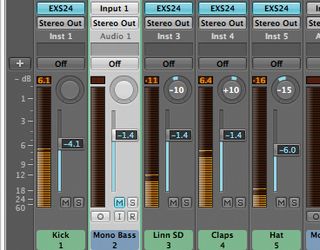
2. We start by muting everything apart from the drums. In dance music, it's common to find most things panned centrally but things don't haveto be like that. We widen the mix a touch, keeping the kick in the middle but moving the snare to -10, the clap to +10 and the hats to -15.
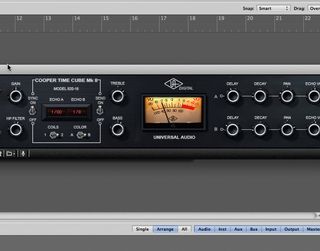
3. The bass needs width too but we can't pan this without losing energy. So we set up an auxiliary and insert a mid-wide panned stereo delay(10 o'clock and 2 o'clock). The delays are 3/16ths (Left) and 1/8th (Right), with short feedback and a High-Pass filter scooping out low frequencies.
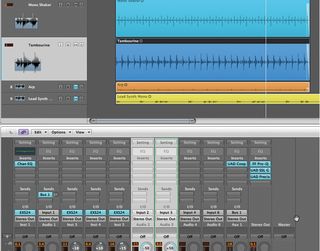
4. We increase the sense of stereo width with the two percussion sounds. These provide groove and drive the beat forward with top-end energybut as the two parts have such overlapping treble frequencies, we can treat them equally, panning the shaker to -50 and the tambourine to +50.
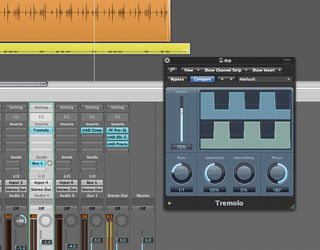
5.We add the arp but to keep it out of the centre, we use Logic's Tremolo plug-in with a square wave to ensure it jumps from left to right ratherthan passes through the middle. We narrow the stereo width to 70% and add a little of the bass' auxiliary Delay.
Get the MusicRadar Newsletter
Want all the hottest music and gear news, reviews, deals, features and more, direct to your inbox? Sign up here.
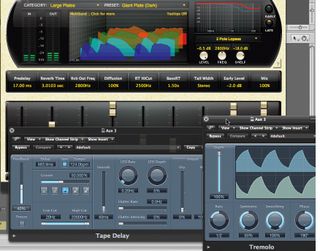
6. We want the body of the lead sound to be placed centrally but it sounds weak without stereo 'interest'. We set up a long, dark Plate stereo reverb on Aux 2 and a new single tap delay on Aux 3, to which we add Tremolo. These provide the width we need.
Don't forget to listen to the audio examples to hear the techniques in action!
Future Music is the number one magazine for today's producers. Packed with technique and technology we'll help you make great new music. All-access artist interviews, in-depth gear reviews, essential production tutorials and much more. Every marvellous monthly edition features reliable reviews of the latest and greatest hardware and software technology and techniques, unparalleled advice, in-depth interviews, sensational free samples and so much more to improve the experience and outcome of your music-making.

"If I wasn't recording albums every month, multiple albums, and I wasn't playing on everyone's songs, I wouldn't need any of this”: Travis Barker reveals his production tricks and gear in a new studio tour

“My management and agent have always tried to cover my back on the road”: Neil Young just axed premium gig tickets following advice from The Cure’s Robert Smith











